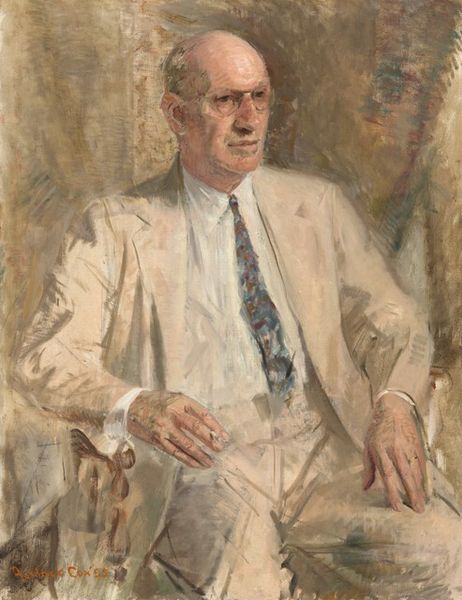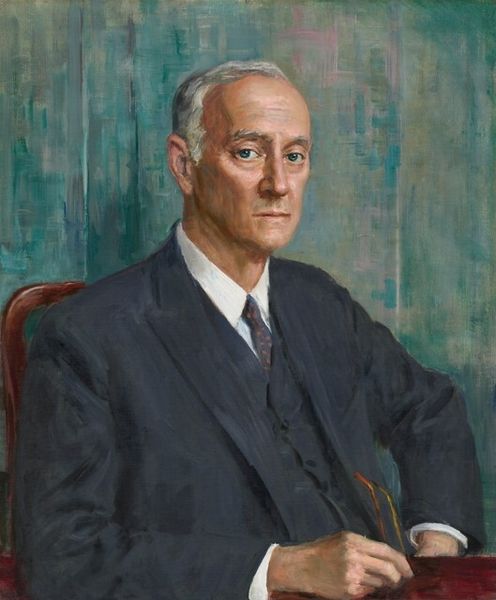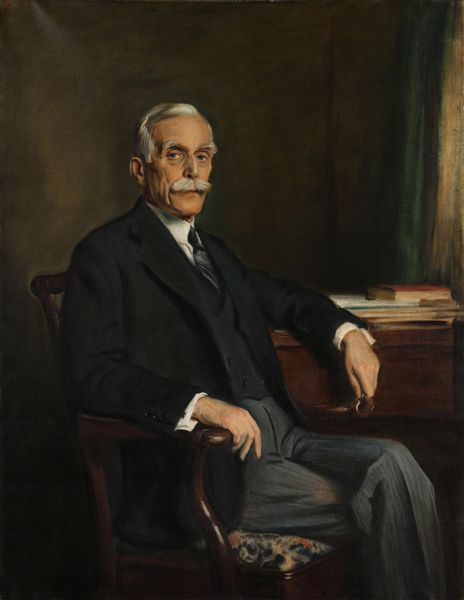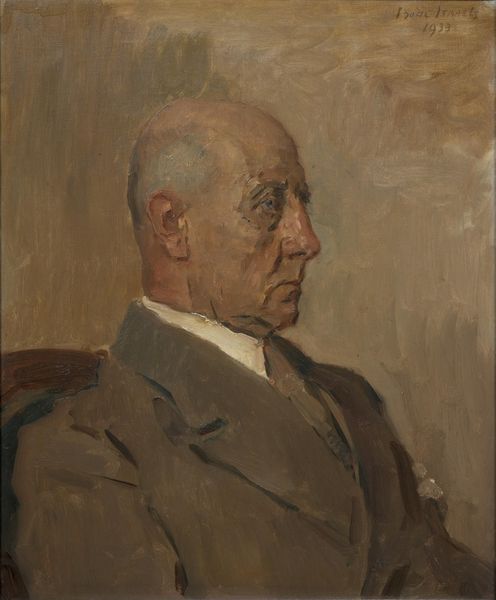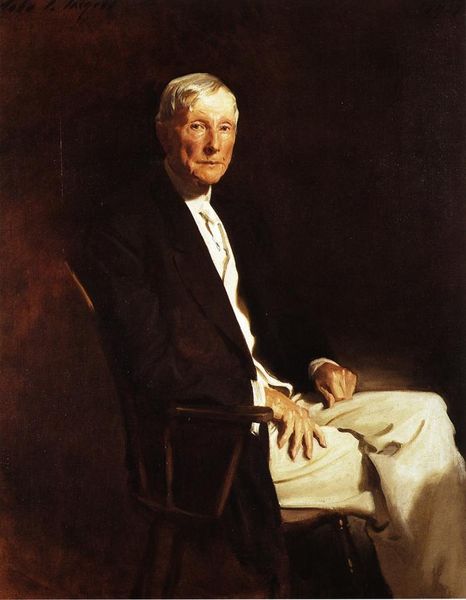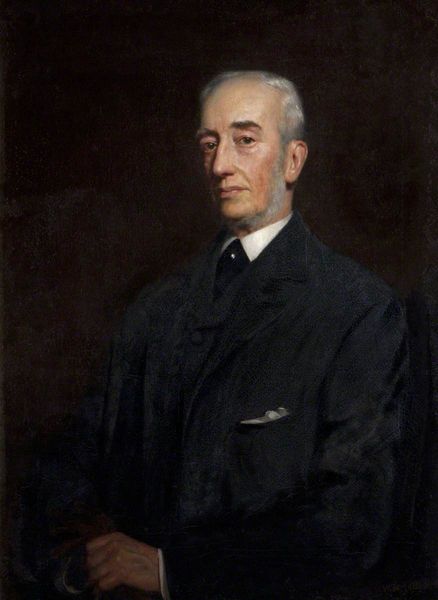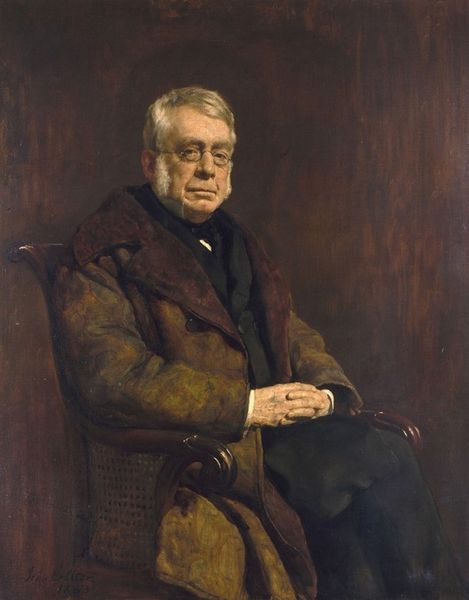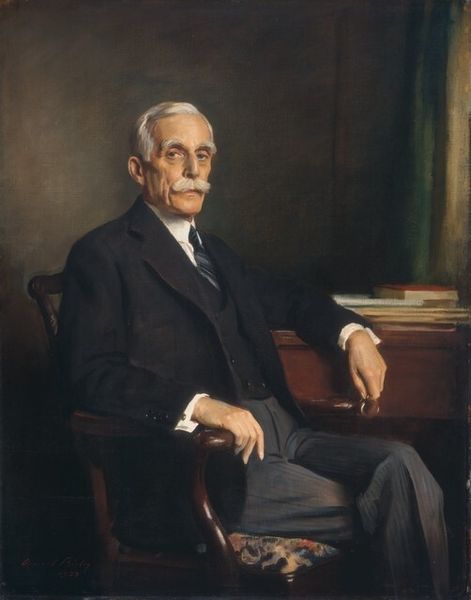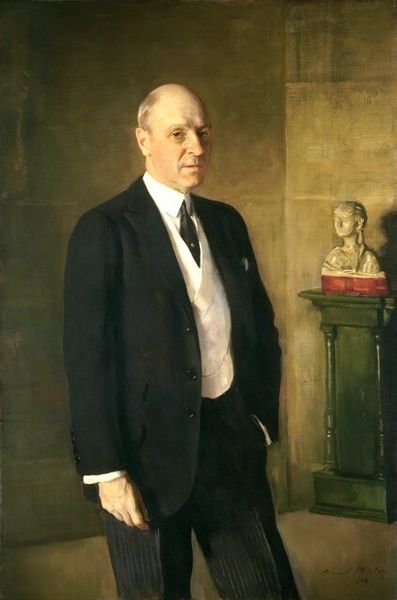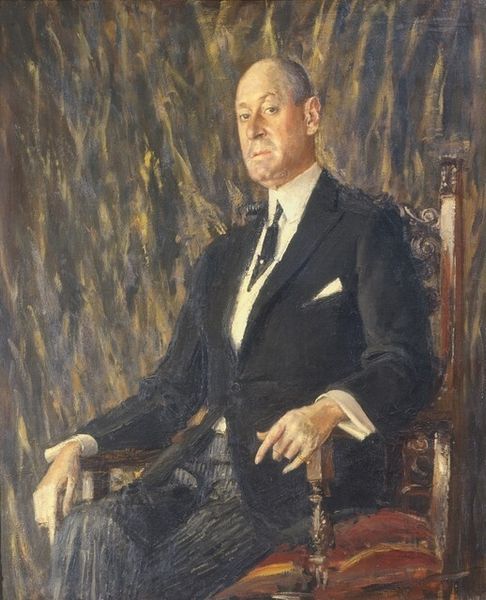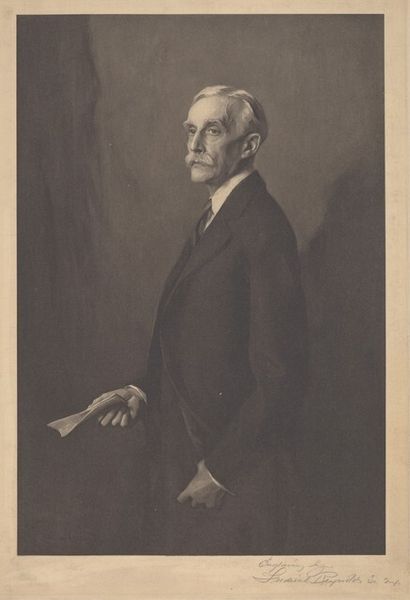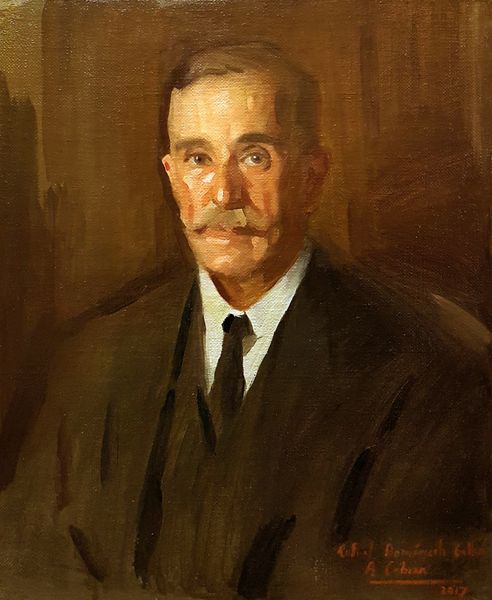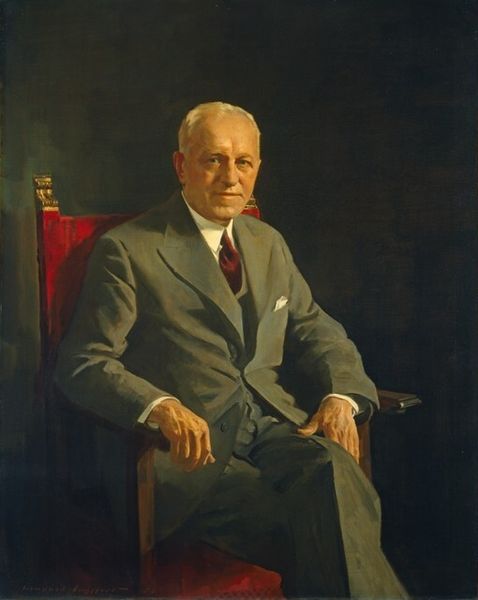
painting, oil-paint
#
portrait
#
portrait
#
painting
#
oil-paint
#
academic-art
#
modernism
Copyright: Public Domain: Artvee
Editor: Here we have John Singer Sargent's 1917 oil on canvas, "Portrait of Woodrow Wilson." There is something both powerful and a bit melancholic about it. What strikes you first when looking at this composition? Curator: The relationship between light and shadow, and the consequential modelling of form, is paramount. Observe the strategic use of chiaroscuro; it directs the viewer's eye across the canvas. Where does your gaze naturally fall, and why do you think Sargent orchestrated it this way? Editor: I'm drawn to his face, definitely. The light illuminates his gaze, but the shadowed areas around him make him look somewhat serious. Are you saying this play of light and shadow serves to emphasize psychological depth through purely formal means? Curator: Precisely. Consider also the textural quality of the paint itself, particularly in the rendering of his suit versus the background. What distinctions do you notice in the brushwork? Editor: The suit seems more precisely rendered with meticulous strokes while the backdrop dissolves into loose gestural marks. Almost as if the artist was more interested in depicting what Woodrow Wilson meant for him and history. Curator: Intriguing interpretation. Note how the composition creates tension between flatness and depth, between figure and ground. The way Sargent uses the color palette - reserved as it may be, to structure a very complicated network of relationships, it’s all about the interplay. Editor: Looking at it this way really focuses the attention to how form constructs an image's emotional tone. I might've overlooked that. Curator: Indeed, and these observations underscore the powerful relationship between an artwork's visual components and its affective qualities. It’s this reciprocal exchange which is always worth further consideration.
Comments
No comments
Be the first to comment and join the conversation on the ultimate creative platform.
